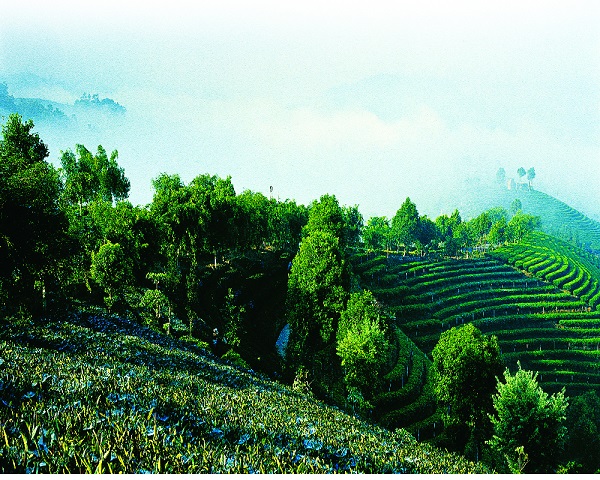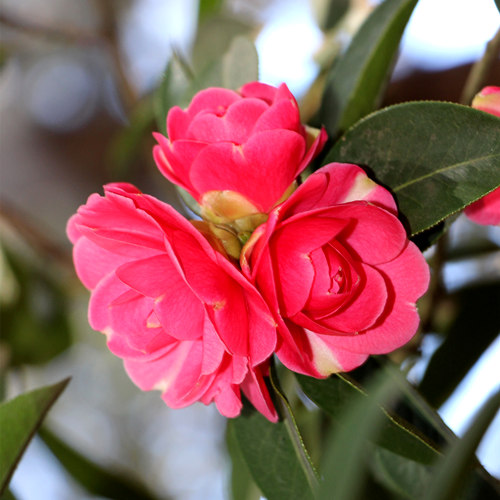
Jingdong Confucian Temple upgrades to National AAA Level Tourist Attraction
Recently, Pu'er City Tourism Development Committee approved Jingdong Confucian Temple to be a National AAA Level Tourist Attraction after the evaluation and public announcement by Pu'er City Tourist Scenic Zone Quality Scale Evaluation Committee without objection followed.
Jingdong Confucian Temple was built in the 7th year of Emperor Zhengtong of Ming Dynasty (1442), and rebuilt at the foot of Yuping Mountain (present location) in the 21st year of Emperor Kangxi in Qing Dynasty (1682). With a history of 334 years, it is a representative of Confucian temples in places where Dai people live for generations, and the second best-preserved Confucian temple in Yunnan, second only to Jianshui Confucian Temple. The entire building, facing and declining to the east, is a rectangle in stage-style courtyard distribution in axisymmetry, covering an area of 5,511 square kilometers with a floor space area of 2,300 square kilometers.
Now, the preserved building parts include Palace Wall, Bank Pond, Champion Bridge, Sishui Memorial Archway, Kuixing Pavilion, Lingxing Gate, Left and Right Wing-room, Dacheng Gate, Dacheng Hall. On August 20, 1986, Jingdong Confucian Temple was announced to be among the first batch of county-level cultural relic preservation sites by Jingdong Yi Nationality Autonomous County. On December 21, 1987, it was announced to be among the third batch of provincial-level cultural relic preservation sites by Yunnan People's Government. In March 2013, it was announced to be among the seventh batch of national key cultural relics protection sites by the State Council.
The monolithic architecture of Jingdong Confucian Temple is grand and stately, consisting of Bank Pond, Sishui Memorial Archway, Kuixing Pavilion, Lingxing Gate, Dacheng Gate, Dacheng Hall, covering a total area of 5,292 square meters.
It is said, in the Spring and Autumn Period in ancient China, schools in Lu State are called "Bank Palace" with a half-moon-shaped pond (called "Bank Pond") in front of it. The Confucius is from Lu State, and did teaching in Lu State, thus the later generations built bank pond for every Confucian temple to commemorate the great thinker. And people in that era call schooling as "in pond". There are 6 stone pillars and 5 stone fences on both sides of the stone arch bridge above the pond. One who wants to enter the Confucian temple needs to walk through the bridge, which means that all selfish motives should be get rid of after crossing the bridge. Only in this way, one gets the possibility to pass the palace examination and reach the pinnacle.
Walking over Sishui Memorial Archway, you will see Kuixing Pavilion, also called Library Tower. It is a two-storey building with a "Jinsheng" archway and a "Yuzhen" archway at each side. Lingxing Gate, as the front gate of the Confucian temple, is a decorative archway with double-eave roof, three gates, four pillars arranged in a row. Its name refers to the implication of celebrating the talents searched by the king. Each time to offer sacrifice to heaven, people will offer sacrifice to Linxing Gate first to pray for bless for bumper grain harvest, thriving domestic animals and all the best in everything. Linxing Gate is a comparatively complicated building in the Confucian temple. It is a decorated archway construction with raised beam plate. It is built on a 1.55 m high pedestal made by giant stone with animal relief sculptures on all the four sides. In front of and behind the crown, there are 1.8 m high stones. Under the eave is the splendid Dougong. The entire Lingxing Gate is resplendent in gold and jade green, imposing and magnificent.
In the wing-rooms on both sides, there are many cultural relic collection of Jingdong County. They include cultural relic exhibition unearthed from chieftain tomb, Jingdong's historical and cultural relic exhibition. It is a solidified textbook. It is a proof to the origin of Jingdong's culture from one aspect. Dacheng Gate also gets wing-rooms at both sides, with Jingdong Education Development History Exhibition and Confucius' Life Exhibition, etc. Dougong and color paintings under the eave of Dacheng Hall largely adopt the cold tone color - dark green, which reflects a strong contrast with the warm tone colors - the dark red wall, the bright red door leaf and the golden yellow relief sculpture, increasing the depth of the eave.



